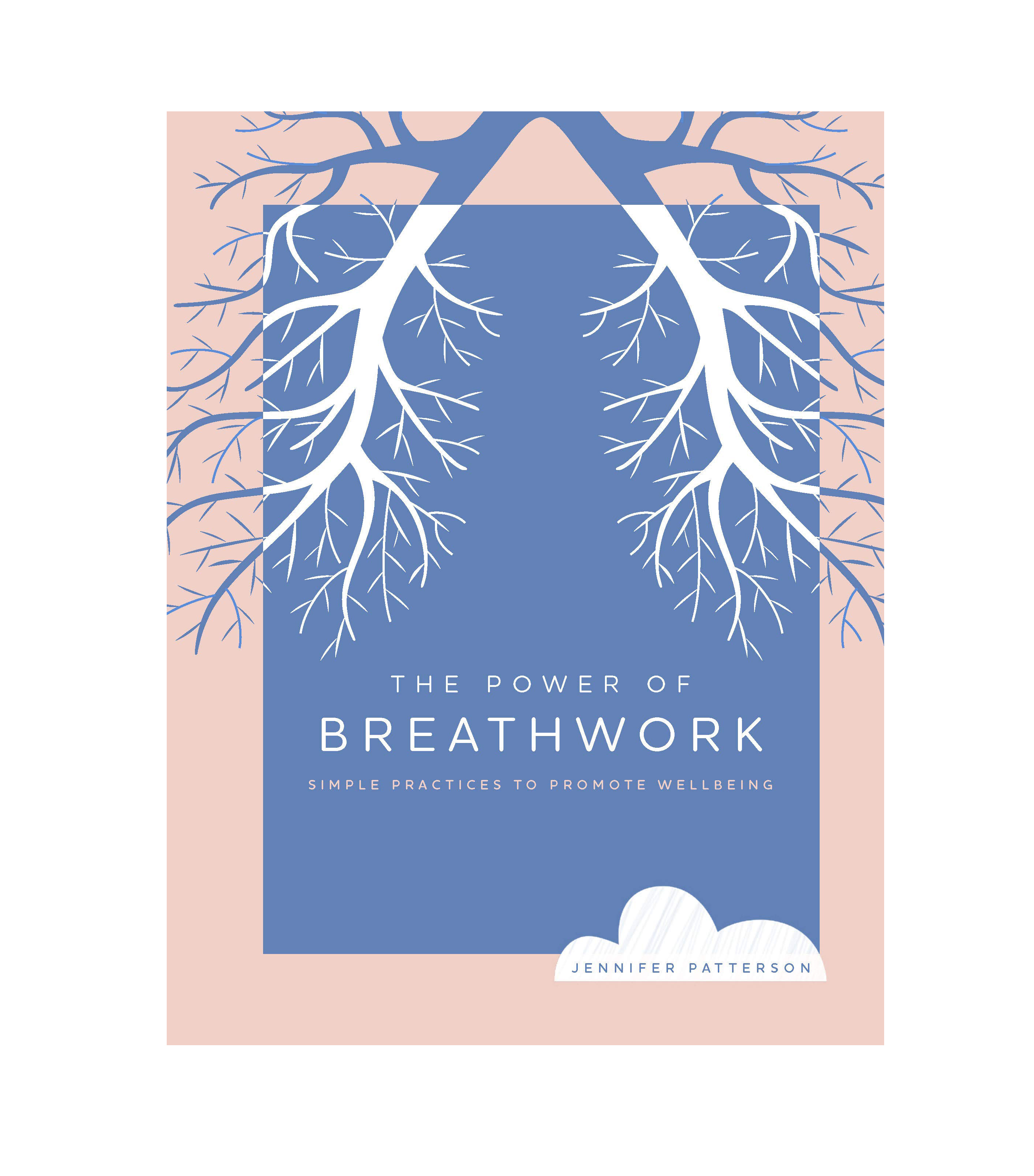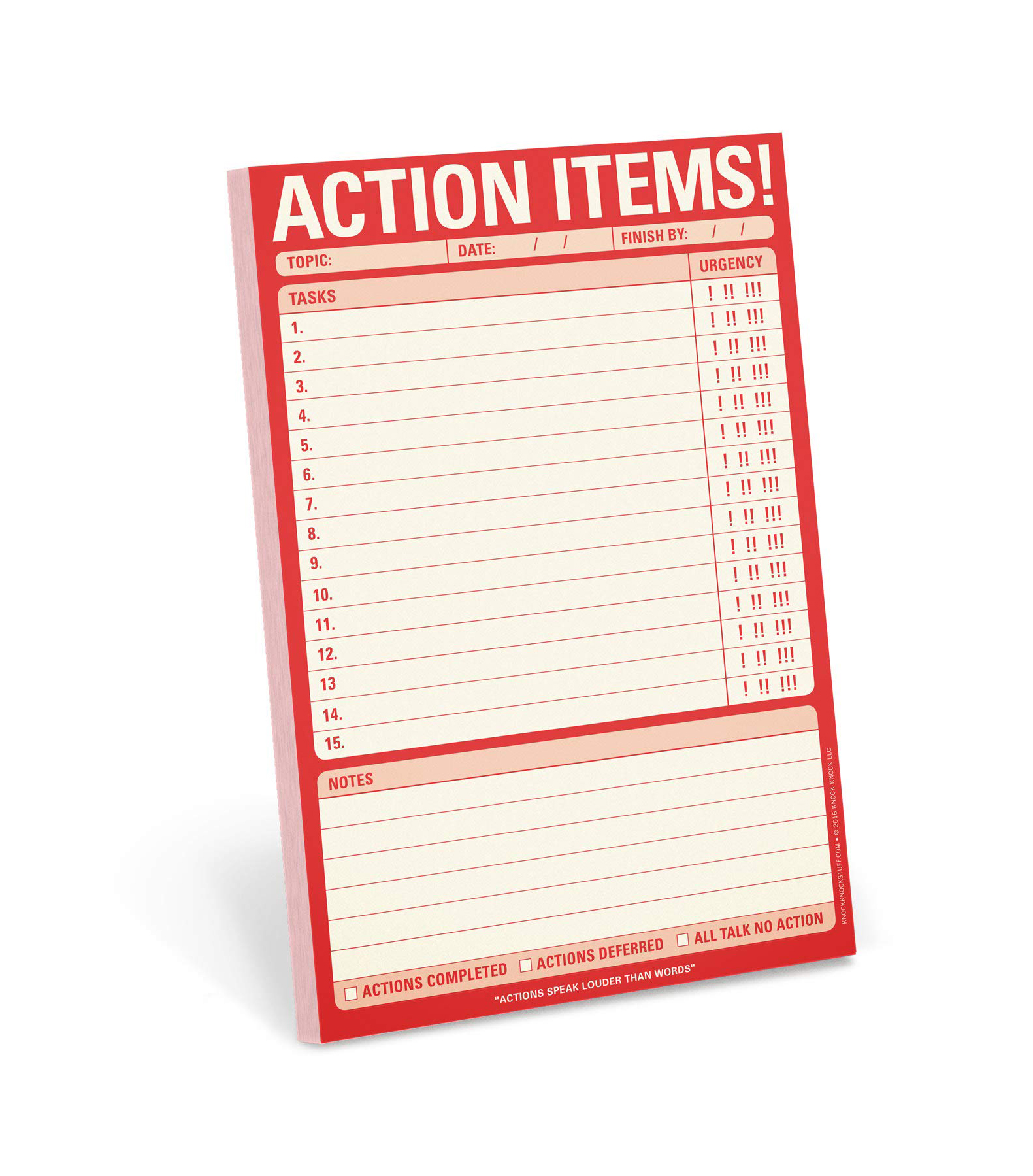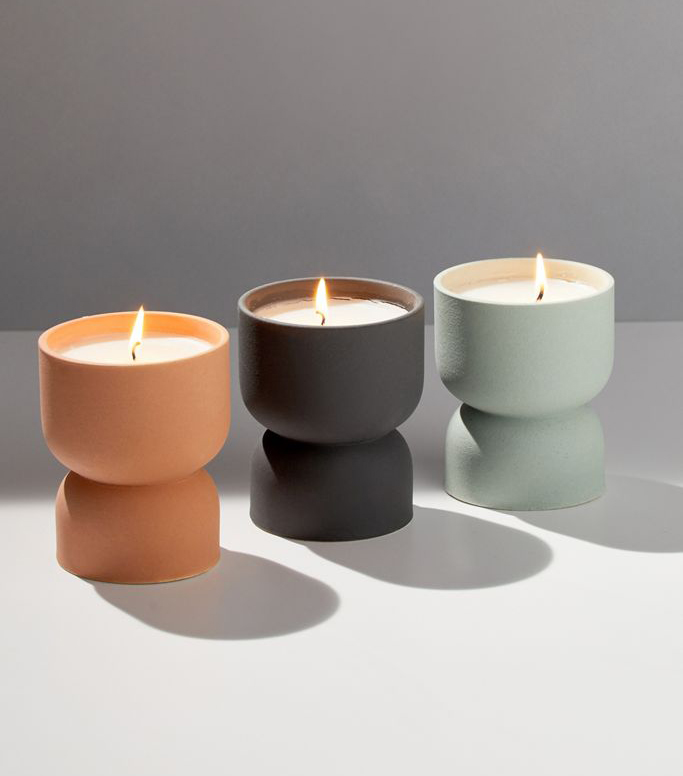Breath Work Is a Powerful Self-Care Tool and Is More Accessible Than You Think

There really is no lack of self-care and wellness options out there if you're looking to nourish your mind and body. What you ultimately choose to incorporate into your life all depends on personal preference and the resources available to you. We all have different needs and goals, so it makes sense that our wellness practices wouldn't be one-size-fits-all.
Breath work is one form of self-care. The practice can be healing, transformative, and rejuvenating. But for many people, it might seem intimidating or out of reach. You might think you need to be on an expensive retreat to do it or that you'll have to pay a ton of money to attend sessions or that it's too "woo-woo" or "new age-y" for you. But that's far from the truth—it's actually more accessible than you think.
What Is Breath Work?

"Breath work is an active meditation used to usher stagnant energy out of the body and help reframe the nervous system's response to traumas trapped in the body and cells," explains Jasmine Marie, a breath work practitioner and founder of Black Girls Breathing. The practice can relax the mind and help you become more present. It can also help you get in touch with some deep-rooted emotions and feelings.
Like there are different types of yoga you can practice, there are different methods of breath work. "It is an umbrella term for all kinds of varied intentional and conscious breathing practices," says Jennifer Patterson, an herbalist, breath worker, writer, and grief and trauma worker. "Traditions of breath have existed in spiritual, religious, and healing traditions throughout the world. Some of the more familiar practices are Pranayama, Holotropic, and integrative breath work, each with their own styles and patterns of breath, and the latter two share overlaps in ancient roots and traditions with Pranayama."
As with many wellness practices, there are a lot of common misconceptions about breath work—the number one being its accessibility, and not just in a financial sense. "One misconception about breath work is that there aren't any diverse practitioners. We are here!" says Chauna Bryant, a breath work meditation guide. "It also has a reputation of only being accessible to wealthy people. Another misconception is that it is 'new age-y,' and don't get me wrong, if that is what you are looking for then you will find it, but breath work is completely customizable. If you want a zero 'woo' experience then it's out there."
The Differences Between Breath Work and Meditation

Like we learned above, breath work is an active meditation. When I tried my first breath work session, I was shocked by how much "work" it really was. I felt both refreshed and a little tired afterward—like I just completed a really good workout. You're doing these breathing exercises and staying very aware of what you're doing. Because I was focusing on my breathing and whether I was doing it right, I found it much easier to stay on track. My mind didn't wander like it does almost all the time when I meditate. I told that to Maryam Ajayi, an Energy Healer and CEO and founder of Dive in Well, who said that I might have found a type of meditation that works for me.
"Meditation is really just bringing your mind back to a singular focus," explains Ajayi. "So clearing the mind is such a stigma in meditation, and you can come back to a singular focus, which can be your breath."
The Benefits of Breath Work
There are so many effects that breath work can have on both the mind and body. The benefits you get from the practice also depends on the type you do. Here are some things you can look forward to:
1. It Can Reduce Stress and Anxiety

Breath work can help you manage anxiety, depression, and stress. Patterson says the practice helps us deprioritize our thinking mind and get more in touch with our bodies. You'll take faster and slower breaths during breath work.
"Using a faster-paced breath helps awaken and enliven us," she says. "Using a slow, deep, diaphragmatic breath is great to strengthen our lungs and is one way of working with our vagus nerve, a nerve that extends from our brain down through our gut. A slow, deep breath stimulates the brain-gut axis while supporting mood, heart rate, cognitive function, digestive function, the immune system, and more. Stimulating the vagus nerve helps bring us into the parasympathetic nervous system, where we can invite in more relaxation, rest, and more easeful digestion." In a regular practice, you can achieve a feeling of balance with a combination of faster and slower breaths.
2. It's Empowering

Ajayi says the benefit she takes away the most from the practice is a sense of empowerment. "Breath work is free—it's a privilege to breathe right now when so many others can't," she says. "One, it's an extreme way to practice gratitude. That you can access something, that can shift your mood. It can shift your day—it can shift your world. Then, it's also empowering to know that you have the ability to do that and you can reclaim that. A lot of people walk around not paying attention to or holding their breath. We spend most of our lives trying to catch our breath, and when we do, we're like reclaiming our innate power."
3. It Can Be an Emotional Release

Bryant says the practice can help people get more in touch with their emotions. This can depend on what type of intention you set when you start a session.
4. It Can Clear Your Mind

Breath work facilitator, guide, and space holder Maya Keane says some styles of breath work can lead to a clearer mind. In turn, a refreshed mind can help you find inspiration and encourage your creativity.
5. It's Grounding

Breath work can make space for feelings of groundedness and calmness, adds Marie. This can be so important when life feels crazy and it's hard to find a moment to yourself.
6. It Increases Self-Awareness

Keane says you might also experience a greater sense of self-awareness, which is understandable since you're focusing on your breath and body in that moment. The self-awareness can help you get in touch with your feelings and what you really need at the moment.
7. It Helps You Develop Trust With Yourself

"Personally, as a queer person, survivor of violence, and someone experiencing anxiety and depression, I've often felt really disconnected and mistrustful of my body while also experiencing shallow breaths and breath-holding patterns," Patterson says. "Breath work has helped me build up a sense of safety within myself and has allowed me to trust myself more deeply and work with what arises in me."
8. It Can Help You Deal With Past Trauma

"When engaging in a more rigorous or fast-paced breathing practice, a lot of emotions and physical experiences can show up quickly," Patterson says. "If we aren't used to being with these strong emotions and sensations, we might feel flooded or overwhelmed. If this happens, feel free to ground yourself by opening your eyes, looking around the room, touching your body or the floor, and returning to a slower breath. Also, if we have a history of feeling unsafe in our bodies, we might have breathing patterns, like breathing shallow or holding our breath, that keep these stronger sensations at bay."
When these emotions come out, it can be good for you in the long run, but Patterson says you might need immediate support when you're going through it during the session. That's why she recommends working with a trauma-informed breath work practitioner who can help.
What to Keep in Mind
If you decide to start a breath work practice or try a session, there are some you should know about that can help you.
1. Do Your Research

Since there are so many different breath work programs, teachers, and schools out there, Ajayi recommends doing your research to find the right method for you. Read more about the different styles and find teachers who you resonate with. It can start with a Google search. "A lot of people do what's popular, and I think it's really important for people to investigate what feels right to them," she says. "Even like looking up their culture, or what culture you're from, to see what teachers there are and how close you can get to the original source is really important—even if that's watching a YouTube video."
2. Take Advantage of Free Resources

Trying a class, workshop, or one-on-one session is one place to start, but if you don't feel comfortable with doing that yet, or if budget is a concern, there are a lot of great and free resources available for you to get started. "There are a lot of free resources from breath work facilitators," Keane says. "I even have a free seven-minute recording on my website that people can get access to so they can just try it, and it's just guided. And that's seven minutes, so they don't really tap too deep into the emotional stuff. It's more just kind of clearing their energy and kind of resetting themselves a bit." You can also try a guided meditation on YouTube or Spotify or find a breath work practitioner on Instagram who might be offering free sessions.
3. Find a Trusted Practitioner
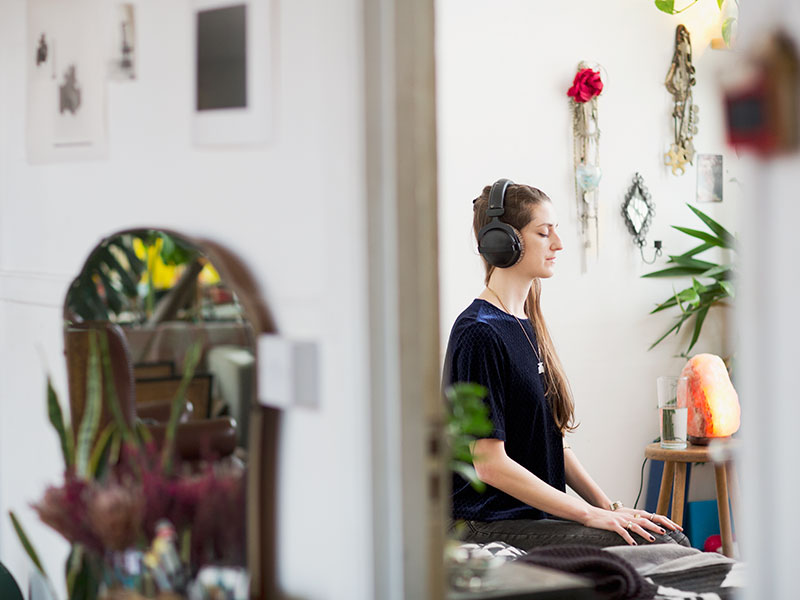
It's important to find a practitioner or facilitator who can provide support and who you connect with, as it will make your practice so much more effective and special. This is especially important for sessions where you might be reliving or facing past traumas. Patterson says some people might think breath work is unsafe for people experiencing PTSD, asthma, or panic attacks, but she says that working with a practitioner you trust will help you feel safe and supported.
4. Don't Be Intimidated

"I would say there's a misconception that you need to be at a certain level of experience with your healing or with breath work or yoga," Keane says. "I think sometimes people are like, 'Oh, breath work only happens if you're becoming a yogi.'" There's no prerequisite to doing breath work. You can still do it, even if you've never done yoga or meditation before.
5. Start Paying Attention to Your Breath

If you're curious, you can get started by checking in on the quality of your breath throughout the day. "Monitor when your breathing is quicker, when it's slower, when it's tighter, when it's deeper, more shallow, and notice when and what times a day and what experiences you're having when those things happen," Keane says. "That's even a more precursor level. If someone's just wanting to start to know what even bringing awareness to and working with their breath is, it's just kind of checking in with it."
6. Listen to Your Body

"Any light-headedness or dizziness experienced is due to the increase of oxygen in the body," Marie says. "It's totally normal, but also, always listen to your body and adjust any tool for you."
7. Let Go of Expectations

Yes, this can be easier said than done, but it will help your practice. "Every breath work session is different, so begin each session with an open mind," Bryant says.
8. Let Go of Fear, Too

Going into the session without fear or preconceived notions will free you up to experience the benefits fully. "The mind likes to be in control. We live in a society where facts and the mind decide the truth—not our bodies," Marie says. "So when in the practice, the most blockages that pop up for people is the fear related to being all the way in their bodies and their minds not feeling in control."
9. Feel Everything

This is another part of letting go. "Breath work has an amazing way of bringing pent-up and stuck emotions to the surface. Let yourself feel everything," Bryant says.
10. Have a Grounding Practice
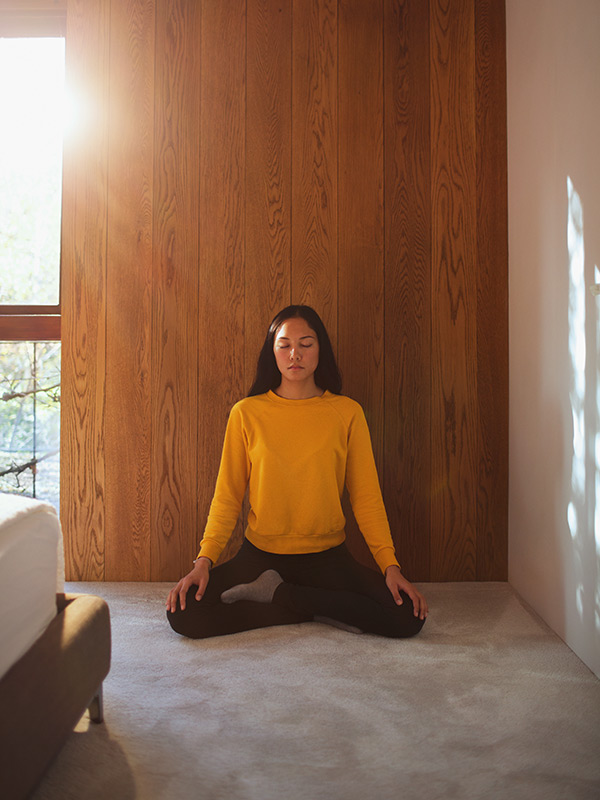
Keane recommends having a grounding practice before and after doing breath work. "In all my sessions, in all my groups, I always have some sort of grounding practice or meditation before and at the end to kind of package up the experience," she says. "And I think that helps bring some security because, usually, I think resistance is a lot of fear and anxiety around what's there if I go too deep." Create as safe a space for yourself as you possibly can, and if you are feeling resistant, have compassion for that, too.
11. There Are No Time Limits

How often and how long you practice breath work is entirely up to you. Keane says you should do it as needed. "I would say if you're someone who really wants to integrate it into your life, doing it anywhere from one time a week to every day is fine," she says. "For some people, seven minutes might not be enough. Sometimes, I want to go a little deeper than that, but I don't want to do a full 40-minute practice. So sometimes, 15 minutes and five minutes of rest feels really good. And you can kind of just play with that until you find something that feels really good."
12. Check With Your Doctor

If you have a medical concern, it's recommended to check with your doctor first. In some cases, you might have to let your facilitator know about your condition or concern, and they can give you some slight modifications.
13. It Might Not Be for You

And lastly, you might try breath work and not have any connection to it at all. That's okay. "It's important to say that breath work is not for everyone," Bryant says. "There are many different self-healing modalities out there. I recommend that people try different facilitators and styles, and if breath work still doesn't resonate, move on to something else. There are many ways to release stress and connect to your body."
Breath Work Techniques to Try

If you're exploring breath work, there are a few things you can try on your own to get started before you sign up for a longer session. While you can practice on your own, if you're looking to do longer-form breath work or want to focus on really specific issues like intention-setting, finding inner peace, bringing more joy into your life, or letting go of ancestral trauma, Ajayi says you'll want to reach out to a practitioner for those needs. It depends on personal preference as well.
But the good news is you don't need to do a whole ceremony or formal session to get started. "One simple practice that people can do is to literally just take a deep breath in, hold it, bring awareness to where their breath is. If it's in their chest, just start breathing into your stomach—lead a deep, long breath into your stomach, through your nose, out through your mouth, and just bring the breath down," Ajayi says. "Your lungs actually sit all the way down to the bottom of your ribs. So when you 'belly breathe,' you're actually breathing into the full capacity of your lungs."

Both Bryant and Patterson say you can also experiment with box breathing, which is a great way to start breath work and helps to calm anxiety or ease your mind when you're having a hard time sleeping. Try these steps:
1. Inhale while counting to four
2. Hold the breath for four counts
3. Exhale slowly while counting to four
4. Hold for four counts
5. Repeat for five minutes or as needed
If you want to incorporate breath work into your routine, Patterson recommends picking a short practice and doing it for five minutes a day or every other day. You can build on it as you start to get more comfortable.
Next up: This Daily Habit Can Help With Sleep, Anxiety, and Stress
This article is provided for informational purposes only and is not intended to be used in the place of advice of your physician or other medical professionals. You should always consult with your doctor or healthcare provider first with any health-related questions.
Sarah is lifestyle writer and editor with over 10 years of experience covering health and wellness, interior design, food, beauty, and tech. Born and raised in Los Angeles, she attended New York University and lived in New York for 12 years before returning to L.A. in 2019. In addition to her work atBest Knockoff Luxury Clothing , she held editor roles at Apartment Therapy, Real Simple, House Beautiful, Elle Decor, and The Bump (sister site of The Knot). She has a passion for health and wellness, but she especially loves writing about mental health. Her self-care routine consists of five things: a good workout, “me” time on the regular, an intriguing book/podcast/playlist to unwind after a long day, naps, and decorating her home.
